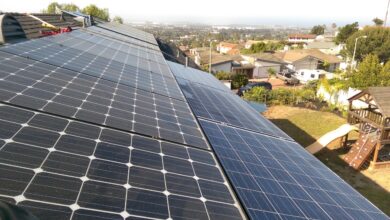When Will Most Gas & Diesel Vehicles Become Worthless?

Sign up for daily news updates from CleanTechnica on email. Or follow us on Google News!
If you were a camera nut, an amateur or professional photographer around 1998 to 2004, you were probably aware that a transition from film cameras to digital ones was occurring. There were some small digital cameras prior to that time, but they were expensive and their image quality was not impressive. Two years or so before 2000, the digital single-lens reflex cameras began to appear, with many advantages over the small digital cameras — mostly better image quality in a familiar form factor. DSLRs also could be used with a variety of lenses that already existed. The advantage of the DSLR was obvious to anyone because a new photo could be viewed right on the camera back instantly. There was no more buying film, loading and unloading film, hoping the exposures were correct, dropping the film off somewhere for development, waiting, and then having to retrieve the photos and pay for them. Or no more developing your own film at home if you had the equipment and time. You could also directly download images to your home computer and begin editing immediately instead of having to scan negatives or transparencies first if you had a scanner, or pay to have it done for you. The digital workflow was much more convenient and efficient.
Film camera owners then, especially those who had spent a lot of money on them and related equipment, were conscious of a new issue, that the value of their film cameras might begin to drop or even plunge.
Today, the film-to-digital camera transition might seem long gone, and yet another transition is happening: the switch from vehicles that burn fossil fuels to those that run entirely on electricity.
If we ask Google when that transition will be completed, there are likely to be a variety of answers. One online source suggests there still might be some gas-powered vehicles on US roads in the year 2050. Quite a few states in the US, such as New York, Oregon, Rhode Island, California, New Jersey, Maryland, and Massachusetts will or may require that no new gas or diesel vehicles be sold within their borders as early as 2035. A new gas-powered vehicle purchased in 2034 might last 12 years, so it would be running in 2046 or later. Considering all the advantages electric vehicles have right now, it’s difficult to imagine why anyone, even in 2024, would prefer to buy an internal combustion engine vehicle. In Europe, the sales of new CO2 emitting vehicles may be phased out by 2035, though it is hard to tell if that plan will actually be realized.
Of course, cars, trucks, SUVS, mopeds, scooters, and motorcycles powered by fossil fuels are not cameras, and they do emit toxic air pollution that harms the planet and human health. So, there is a rather pressing urgency to get rid of them. Digital cameras, in turns out, are simply superior to film cameras in many ways. Electric vehicles are also superior to ones that use fossil fuels, which are associated with climate change and climate change impacts, toxic air pollution, disastrous oil spills that harm marine ecosystems and kill a lot of innocent wildlife such as dolphins and shorebirds. So, because EVs are superior technology and there are rather compelling reasons both for sustainability and protecting both human and non-human life, electric vehicles may be adopted more quickly than is generally assumed.
Along the way to that adoption, something really bad is going to happen to the value of fossil-fuel vehicles. Their value will plunge, because the demand for them for personal transportation will fall.
Some of their owners might be appalled to find their fossil-burner is worth less than one quarter of its purchase price when new, or even less than that. Some might be sold for scrap metal only, and as such become almost worthless. But when will the ICE vehicle value slide begin? How will their owners know when to dump them so they don’t lose a lot of value?
One potential solution is to get rid of ICE vehicles in the next five years or less when they may still have some value. Delaying beyond that might be risky. If you are someone who likes to buy a vehicle at a dealership and are expecting some trade-in value, there might come a time when ICE vehicles don’t have any.
One potential red flag might be if you notice at least half the vehicles in your neighborhood are electric, and all-electric, not hybrids. Another might be if you notice gas stations near you going out of business. If your neighbors have EVs and begin to make fun of you for being the lone fossil-burner holdout, this might be the point at which your personal transportation is quickly going to become a paperweight and may need to be towed to a junkyard. Another indication is if laws change to increase vehicle registration fees for the most polluting vehicles, namely, the ones directly emitting CO2 and particulate matter. Another indicator to watch for is if you notice ICE vehicle parts have increasing supply chain problems along with soaring costs. If that scenario emerges, the cost of repairing and maintaining an ICE vehicle may exceed its value. Other signals might be legacy automakers having layoffs and closing plants. Another might be oil change businesses shuttering, such as Jiffy Lubes, etc. A larger scale development might be fossil fuel corporations downsizing or going bankrupt: Exxon, BP, ConocoPhillips, etc.
So, what is your prediction for the fate of ICE vehicles, and when do you think they become nearly worthless or entirely worthless piles of junk?
Remember, it wasn’t that long ago that there were no gas stations. In the US, the first one began operating around 1905 to 1907. So, it is conceivable that once again, there will be no gas stations. If there are hotter and hotter temperatures, larger and more frequent wildfires, larger and more frequent devastating storms, longer and more severe droughts and greater flooding, then more drastic government measures might be necessary. New public policies might further hasten the transition away from ICE vehicles and fossil fuels, as we have seen with the ban in Ethiopia.







